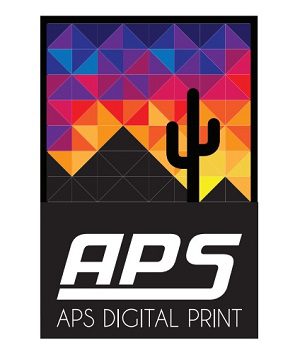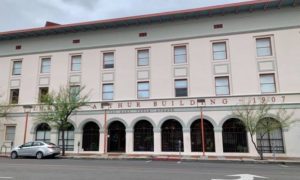FOLLOW @JAVIERJMORALES ON TWITTER!
[rps-paypal]
[ezcol_1half id=”” class=”” style=””]

— General history
— J.F. “Pop” McKale
— The games
— Comparisons then and now
— Wildcats nickname
— Military service
— Rankings
[/ezcol_1half]
[ezcol_1half_end id=”” class=”” style=””]
Excerpt from L.A. Times, Nov. 8, 1914, authored by Bill Henry:
“Arizona’s cactus-fed athletes, despite heroic efforts on the part of their two halfbacks, (Asa) Porter and (Franklin) Luis, went down to defeat before the Occidental Tigers yesterday afternoon, the tally with all precincts heard from being 14 to 0 in favor of the Tigers.
Confident of rolling up a big score, the Tigers took the field with grins on their faces, but before the game was 10 seconds old they knew they had a battle on their hands.
The Arizona men showed the fight of wild cats and displayed before the public gaze a couple of little shrimps in the backfield who defied all attempts of the Tigers to stop them.”This site will conduct a countdown in a 100-day period, leading up to Arizona’s 2014 football season-opener with UNLV on Aug. 29 at Arizona Stadium. The 100 Days ‘Til Kickoff countdown will include information daily about the historic 1914 Arizona team that helped create the school’s nickname of “Wildcats” because of how they played that fateful day against Occidental.
[/ezcol_1half_end]

The first pavement of a street in Tucson on Congress in 1914 (Tucson Citizen archived photo)
[ezcol_1half id=”” class=”” style=””]
The birth of the nickname “Wildcats” after Arizona’s hire of J.F. “Pop” McKale as coach and athetic administrator was symbolic of the many developments that engulfed the Tucson community 100 years ago.
The year 1914 was instrumental to Tucson in a variety of ways including the first pavement of a street in downtown and the rebirth of its afternoon newspaper — the Tucson Citizen — after a fire burned down its building in 1912.
Prohibition started in Tucson in 1914 — Arizona was one of the first states to enact the law — forcing the closures of many small saloons around town. Although the law had an immediate negative impact on those businesses, proponents of prohibition believed it forced owners to clean up the city and focus their economic development in other ways.
[/ezcol_1half]
[ezcol_1half_end id=”” class=”” style=””]
[/ezcol_1half_end]
The name “Corbett” became synonymous with the governing and planning of Tucson in 1914. J. Knox Corbett, father of Hiram Corbett (of whom Hi Corbett Field was named after), was elected mayor of Tucson in 1914. A postmaster of Tucson and owner of J. Knox Corbett Lumber Co., the elder Corbett was one of Tucson’s pioneers, moving with his family from South Carolina in 1881.
J. Knox Corbett became the son-in-law of Sam Hughes, a successful merchant during the California gold rush of the mid-19th century who helped incorporate Tucson in the 1870s. The historic Sam Hughes neighborhood is adjacent to Arizona’s campus between Campbell Avenue, Speedway Boulevard, Country Club Road and Broadway Boulevard.

The 1914 Arizona football team that earned the honor of being named the first “Wildcats” was composed of (front row, left to right): Verne La Tourette, George Seeley, Leo Cloud, Richard Meyer, Asa Porter. Second row: Franklin Luis, Lawrence Jackson, Ray Miller, J.F. “Pop” McKale (coach), Turner Smith, Harry Hobson (manager), Orville McPherson, Albert Crawford, Ernest Renaud. Back row: Albert Condron, Emzy Lynch, Charley Beach, Vinton Hammels, Bill Hendry, George Clawson, Harry Turvey.
(AllSportsTucson.com graphic/Photo from University of Arizona Library Special Collections)
[ezcol_1half id=”” class=”” style=””]
At the retirement of his father, Hiram Corbett became president of what was then the J. Knox Corbett Hardware and Lumber Company. Hiram was an amateur golfer in the 1920s and 1930s. He organized the first Tucson Open golf tournament in 1950. As president of the Texas Baseball League, Hiram was instrumental in bringing professional baseball to Tucson. In 1951, the baseball field at Reid Park was named “Hi Corbett Field” in his honor.
After Arizona gained statehood in 1912, the city of Tucson seemed to receive a jolt and the shock waves started to make the territorial desert town evolve into a city in 1914.
McKale moved from the Midwest to Tucson in 1911 after learning about the potential growth in Arizona. A fellow Albion (Mich.) College graduate, Harold Steele, was the principal of Tucson High School. After reading about an employment vacancy in a trade periodical, McKale wrote to Steele and was hired via telegram.
[/ezcol_1half]
[ezcol_1half_end id=”” class=”” style=””]
[/ezcol_1half_end]

Tucson developer Sam Hughes (left sitting) with J. Knox Corbett (standing) and Hiram Corbett sitting with son Knox. Photo taken at the historic Corbett House in Tucson (Tucson Museum of Art and History)
Within three years, McKale was at Arizona developing an athletic program that started showing the fight of Wildcats in the fateful 1914 game at Occidental.
The Tucson Citizen, whose building burned down at Belknap (now Scott Avenue) and Congress Street downtown in 1912, had that same fighting spirit to survive. The afternoon newspaper relocated to a temporary office a couple of blocks away on Congress. The Arizona Daily Star came to the Citizen’s aid and allowed the newspaper use of its printing press until it became fully functional again.
An editorial in the Tucson Citizen had a headline that read: “Citizen will rebuild and be bigger than ever”.
In 1914, the Citizen plant opened at the corner of Stone and Jackson, its eighth move in 30 years. It remained there for 26 years.
Although the Citizen in that generation survived a fire, it could not live through the dawning of the Internet at the turn of this century. The Citizen closed its print operation in May 2009.
When McKale arrived to Tucson by train in 1911, he was befuddled at what he saw. It was not only raining in Tucson — a rarity — but all he noticed was the dirt roads.
“There wasn’t an inch of pavement in this city that I had been told was ‘up and coming'”, McKale was quoted as saying in the Abe Chanin book They Fought Like Wildcats.
McKale did not give up on Tucson. His admiration for the city seemed to grow as it developed. In fitting fashion, the first pavement of a Tucson street came in 1914 — the year McKale’s “Wildcats” were born. The pavement started on East Congress Street near Belknap, where the old Citizen plant burned down.
Arizona’s “Varsity” and the City of Tucson showed that year that it could put up a fight.
ALLSPORTSTUCSON.com publisher, writer and editor Javier Morales is a former Arizona Press Club award winner. He also writes articles for Bleacher Report and Lindy’s College Sports.




























